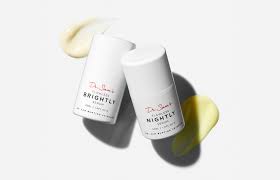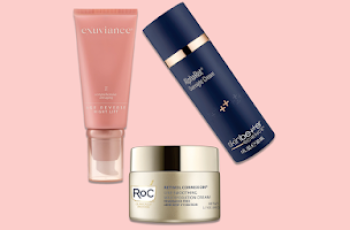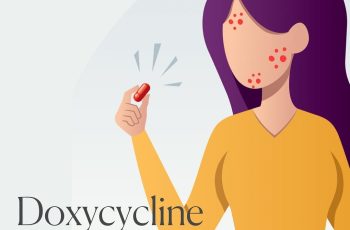How Many Times to use Azelaic Acid
Azelaic acid is certainly one skincare ingredient that seems to miss out on receiving the praise it deserves. Quite often there are other ingredients that overshadow azelaic acid, especially when it comes to treating acne, spots, and breakouts there are a couple skin ingredients who claim the blemish combating throne. But don’t let that fool you into thinking azelaic acid can’t deliver impressive skin results and showing frequent acne flare-ups the door. The downside to this potent powerhouse is the fact although it has been around for few years, there is still much to learn about it.
So, let’s draw our attention to exactly how many times to use azelaic acid and the benefits you can expect to see from introducing it into your daily routine. Don’t forget if its azelaic acid you’d like to know more about there is a full blog post about it and its skin benefits, so check that out for more information.
How often should you use azelaic acid?
Whether the product you’re using is prescription or an over the counter (OTC) formula many dermatologists suggest starting off by applying a thin layer all over the skin. This is after you have consulted with a doctor, dermatologist, or medical professional to ensure you and your skin are safe to use azelaic acid in your daily routine.
When applying a product enriched in azelaic acid you can start with a pea or marble size amount and spread it evenly across the face and down onto your neck. If you are prone to sensitivity for the skin to avoid any unwanted side effects, it is suggested for you to use it every other day.
Can you use azelaic acid every day?
Yes, you can! Once you have performed a patch test for 24 hours before to ensure your skin will be happy with you using azelaic acid of course. Here are a few tips on how to introduce azelaic acid into your routine effectively.
Start off slowly and use it once a day in the evenings
Once the skin has built tolerance you can apply it twice a day
If you are wanting a gentler approach opt for a product such as a face wash or cleanser that doesn’t stay on the skin for too long
Follow any product containing azelaic acid with a hydrating moisturiser containing a humectant, such as hyaluronic acid
Ensure you apply a daily SPF 30 or higher every day to protect the sun from damage from UV exposure.
If there is ever any sign of itching or irritation stop using the product immediately
By following these tips and the instructions found on the packaging of your product you will reap the rewards of this powerhouse ingredient without the side effects.
When should azelaic acid be used in routine?
This is very much dependant on the product the ingredient is formulated into as this will determine when in your routine you would apply it. The general skin rule is to apply products from thinnest to thickest consistency to avoid the formulas having to compete or prevent each other from absorbing into the skin. When used in a serum you can mix it with your favourite moisturiser once or twice a day after you have cleansed the skin and used an exfoliating toner. This will ensure the build-up of dead skin cells are sloughed away and any remaining traces of dirt, bacteria and impurities are removed allowing the following steps of your routine to absorb quickly into the lower layers of the skin.
Can I use azelaic acid twice a day?
Yes, in fact, if you are wanting to get the best out of this potent ingredient many skincare experts suggest using azelaic acid twice a day. Although the word acid carries some precautions, azelaic acid is one of the few chemical exfoliants that are well-tolerated for those prone to sensitivity. This results in azelaic acid working on the outer layers of the skin by “telling” the cells how to behave leading to the complexion becoming smoother, healthier, and reversing any premature signs of ageing.
What should you not mix with azelaic acid?
It is suggested to avoid mixing azelaic acid with the popular and highly potent BHA salicylic acid. This is because of the increase chances of experiencing irritation and dryness. Considering that compared to other acids used in various formulations, azelaic acid does not increase photosensitivity to UV exposure. But if you find yourself becoming a little lack with your daily application of sunscreen you will sadly undo all the hard work azelaic acid puts into restoring the skin to its healthiest state.
Are you supposed to wash off azelaic acid?
No, not if you want to see the results of this potent acid quickly. There are a number of products available containing high percentages of azelaic acid reaching as high as 20%, although these are usually prescribed. To reap the rewards of this acid its best to apply serums, oils, creams, and moisturisers to the skin and allowing them to remain on the skin for as long as possible.
Is it normal for azelaic acid to sting?
Yes, some common side effects of using azelaic acid include itching, burning, stinging, and tingling of the skin. This is likely to be most noticeable depending on the percentage of acid found in the formulation. To avoid this, or any areas of concern, it is vital you consult with a doctor or dermatologist before using azelaic acid in your daily skincare routine.
What goes well with azelaic acid?
The best ingredients to team with azelaic acid for optimal results are hyaluronic acid, niacinamide and popular AHAs such as glycolic and lactic acid. You can alternate the days and different routines in which you apply each of these ingredients to benefit from the effective results each ingredient has on the skin, with minimal chances of side effects. With azelaic acid considered safe to use for those with sensitivity or prone to flare-ups in skin conditions such as rosacea it is likely that once you introduce it to your routine, chances are you’ll never stop using it.
There you have a little more information about how many times to use azelaic acid in your daily routine. Not as scary as the name suggests am I right? If skin is your thing, come and follow us on Instagram for more expert skin tips, new product launches and other exclusives.
DQH Knowledge drop: In your 20s, your skin cell turnover decreases. (Cell turnover is a key component in keeping your skin youthful.) You know what else slows down? Your collagen production. Starting in your 20s, collagen decreases by about 1 percent per year. Should you want to prevent fine lines and wrinkles, start by eliminating behaviors that contribute to premature aging. “If it’s bad for you, it’s bad for your skin,” says dermatologist Michel Somenek.
“Cigarette smoking reduces blood flow to the skin and causes premature wrinkling and a dull skin texture. Making the repeated pursed motion to inhale can also cause smoker’s lines. Alcohol and recreational drugs are toxins for the skin that damage its cellular structure and DNA,” Somenek tells us. “The faster you eliminate vices while you are young, the better chance your skin and body have to recuperate.” Also, adopting an anti-aging routine in your 20s is key. After all, the best offense is a good defense. We spoke to Somenek and experts Joshua Ross and Audrey Kunin to find out more.
Keep reading for the best anti-aging products for your 20s, according to skincare professionals.
Sunscreen
“We all know that the sun is the number one cause of skin aging and starting the prevention in your 20s is very important,” Ross says. “The majority of your sun damage won’t start to appear until you’re in your 30s, so don’t wait until you see it surface or you’ll be behind the curve. Stay ahead of it with a good-quality zinc-based sunscreen worn daily.”
Farmacy Green Defense Daily Mineral Sunscreen
An invisible sunscreen with SPF 30, plus botanical extracts meant to protect skin with tons of antioxidants. Bonus: It’s clean and fine to use under makeup.
Bareminerals Complexion Rescue™ Tinted Moisturizer Broad Spectrum SPF 30
Although we recommend you use your SPF and moisturizer separately, we also understand moments when you don’t have time or energy for that extra step. For those times, this bareMinerals moisturizer is a great thing to have on hand.
Vitamin C Serum
“A great introduction to anti-aging is to start with a vitamin C serum in your morning skincare routine,” Ross says. “It’s a powerful antioxidant that will neutralize free radicals and brighten the skin.” He adds that it’s a great way to counteract the effects of the sun’s harmful rays, which, as previously mentioned, are among the biggest causes of premature aging.
Drunk Elephant C-Firma™ Vitamin C Day Serum
The Drunk Elephant C-Firma is a lightweight serum that promises to give skin a glow by combining the brightening powers of vitamin C with ferulic acid, l-ascorbic acid, and vitamin E. The included sodium hyaluronate is meant to replace hydration loss, so you shouldn’t have to deal with any irritation.
Sunday Riley C.E.O. Rapid Flash Brightening Serum
This potent serum is jam-packed with vitamin C (15 percent, to be exact), which means it’s a potential superstar at both brightening skin and dousing it in antioxidants.
Peptides
Using peptides on your skin has many benefits, says Somenek. “The skin barrier is what defends the body against pollution, UV rays, bacteria, and toxins. It can be damaged by several everyday factors. Using topical peptides aids in building a stronger barrier,” he says. “Peptides comprise elastic fibers, which are a type of protein. These fibers help to make skin appear taut and firm. Peptides can also help repair damaged skin, relieve inflammation, and even out skin tone. Some peptides can kill acne-causing bacteria that is common in 20-somethings.”
Kunin agrees, saying, “Peptides are an excellent entry point for supporting collagen.” She recommends looking for face and eye treatments that contain these collagen-boosting powerhouses.
Charlotte Tilbury Magic Eye Rescue Cream
This Charlotte Tilbury super-emollient eye cream has a base of coconut oil and shea butter (read: it’s incredibly hydrating). Botanicals plus peptides are meant to help reduce dark circles and boost collagen, respectively.
This creamy moisturizer serves up potent collagen-boosting peptides and pycnogenol, and antioxidant-rich vitamin C. “Instead of sitting on top of the skin, peptides penetrate the outer layer so they go deep. The ‘signals’ they send tell the cells to produce elastin and collagen, which are needed for youthful-looking skin,” explains Somenek.
At-Home Peel Pads
Remember that skin cell turnover fiasco we talked about earlier? One way to help support it is by exfoliating. “Exfoliation is important to help keep skin fresh and luminous,” Kunin says. She recommends using at-home peel pads as an easy and effective way to exfoliate.
“The goal in your 20s is to fight the slowing pace of cell turnover. It is wise to use products that gently exfoliate, yet still remove oil and other impurities. Products that have Alpha Hydroxy Acids (AHA) or Beta Hydroxy Acids (BHA) are a good choice.”
According to Somenek, you should only exfoliate two to three times a week. “People of all ages are guilty of over-exfoliating and that can be too much of a good thing,” he says.
Dermadoctor Kakadu C Intensive Vitamin C Peel Pad
A few swipes of this Derma Doctor powerful peel pad promise to leave your skin glowing and smooth, thanks to the seven (yes, seven) types of chemical exfoliants, including AHA and BHA. It also contains vitamin C via Kakadu plum extract for added brightening and antioxidant protection.
KEY INGREDIENTS Kakadu plum extract is sourced from the Kakadu plum, a fruit grown in northern Australia. It contains vitamin C, which restores the skin’s natural barrier, increases collagen production, and soothes irritation.
Dr. Dennis Gross Skincare Alpha Beta® Universal Daily Peel Pads
These are the gold standard of peel pads, with a cult following and over 900 five-star reviews on Sephora. They’re easy to use and contain a blend of anti-aging exfoliating acids.
Emollient Night Cream
“In your 20s, you need to start upping the hydration in your skincare routine. You may have been cautious of over-moisturizing because of acne in your teens, but as you enter your 20s, your skin transitions and becomes drier,” Ross says. “I recommend an emollient night cream added into your evening skincare regimen.”
“Twenty-somethings need to make sure that they are not using creams that will clog their pores and cause excess oil production,” says Somenek. Opt for non-comedogenic products.
Cerave Skin Renewing Night Cream
One great choice is the CeraVe Skin Renewing Night Cream, which is a non-comedogenic night cream that leaves skin soft and glowy. It combines the moisturizing powers of ceramides and hyaluronic acid.
RoC Retinol Correxion Max Hydration Creme
“The best night cream ingredients contain retinol, benzoyl peroxide, and/or salicylic acid or hyaluronic acid. The goal is to moisturize, yet remove excess oil,” says Somenek. This Roc Retinol Correxion cream fits the bill as it contains both hyaluronic acid and retinol so it promises to moisturize while also being non-comedogenic.



